Frequently asked questions
Cleanaway agrees that the best way to treat waste is still to avoid, reduce, re-use and recycle whenever possible. Victorians are getting better in sorting and diverting recyclables, food and organics to recycling/composting facilities. However, there will always be things that cannot be recycled (such as items that are put in the general waste bins, or commercial and industrial waste). At the moment, these non-recyclable items end up in landfill – currently around 4.6 million tonnes each year in Victoria (refer to Sustainability Victoria’s waste projection model and select the year 2022).
Cleanaway is finding new ways to make good use of non-recyclable materials. We have learnt from international experience that waste-to-energy technology can help us recover energy and largely reduce the need for landfills.
99.9% of the flue gas produced will be gases common to air, including oxygen, carbon dioxide, nitrogen and water vapour. The remaining pollutants are treated with modern technology to meet stringent emission limits. On cold mornings you may observe a white mist coming from the flue gas stack that is caused by condensing water vapour.
Continuous Emissions Monitoring Systems (CEMS) will be used to continuously monitor the quality of flue gas emissions from the MERC to provide feedback to the flue gas treatment control system and for reporting purposes.
By proposing to utilise best available techniques throughout the MERC facility, the proposal will benefit from the vast amount of knowledge and experience that has been gained internationally in designing, constructing, commissioning, operating and maintaining a state-of-the-art waste-to-energy facility that meets best practice performance and environmental emission standards. Those standards have been developed over the past decades based on operating facilities in Europe and the UK, and have been established to protect human health and the environment. This is important because in Europe and the UK, most of the waste-to-energy facilities are located in the middle of major cities and without the luxury of buffer zones (that is as close as possible to where the waste is generated and where the energy and other resources recovered from waste can be readily utilised.)
The MERC will be designed to meet the EU Industrial Emissions Directive 2010/75/EU (IED), which sets stringent emission limits and monitoring requirements. In addition, the MERC will include on-site processes to treat the solid ash residues, to either enable their reuse, or their safe disposal to landfill.
Cleanaway takes its environmental protection duties very seriously and has engaged specialists to undertake an Air Quality, Greenhouse Gas, Odour and Human Health assessments to identify any potential adverse impacts to the surrounding community and to ensure that the process design and any proposed mitigation measures will be effective in avoiding the risk of environmental damage and/or impacts on human health.
Cleanaway undertook a diligent assessment of potential sites and determined that this site is the most appropriate due to the buffer distances to residential and industrial neighbours.
The site in Wollert was selected as the most appropriate location, after a thorough search of alternatives across Victoria. Our proposed waste-to-energy facility takes up about 10 hectares of our overall 82 hectare site (plus supporting infrastructure)
The site was selected with the existing neighbours in mind, as well as the future proposed developments surrounding the site. The site is located near an existing and (approved) future quarry, high voltage electricity transmission lines, a future wastewater treatment facility, a proposed gas-fired power station and the existing Brickworks brick-making plant and quarry.
We are in regular communication with neighbours to reduce any potential impacts from the facility.
Our proposal is designed to use international best practice technology to ensure that there is no adverse impact to the environment.
As part of the environmental approvals for the project, we are undertaking air quality modelling, as well as a human health risk assessment to further understand potential risks.
The development of the MERC is sponsored by the private sector. Proposed total investment of more than $700M.
Once the MERC is operational, waste suppliers such as councils (who collect household waste from rate payers), businesses and institutions who use Cleanaway’s waste collection services and third party commercial waste collection service providers will pay a fee to have their residual waste processed at the MERC, just as they currently do to send that waste to landfill for disposal.
The MERC will create over 800 direct jobs in construction and even more indirect jobs. It will create 50 ongoing highly skilled jobs.
The MERC will include a Visitor and Education Centre to increase awareness of the waste hierarchy and promote ways to reduce, reuse, recycle and recover energy (and other resources such as recyclable metals and construction aggregate) from waste. We welcome local schools, community groups and individuals to reach out to discuss future opportunities for visits and to develop educational programs.
The inert bottom ash (known as Incinerator Bottom Ash) will be allowed to mature before it is processed to separate metals for recycling and to create an aggregate product (IBAA). It is common practice in the UK and Europe for the IBAA to be utilised in construction applications. By recovering recyclable metals and reusing the IBAA, we will be able to divert more than 95% of waste from landfill!
The Air Pollution Control residues (APCr) may have relatively high concentrations of heavy metals and typically requires treatment prior to disposal
You can read the “Ash and residue management” fact sheet to understand more.
Cleanaway, through its network of transfer stations and Melbourne Regional Landfill, understand the volume of waste that is currently disposed to landfill. A thorough assessment of waste volumes in the Melbourne market has been undertaken to inform the setting of the design capacity of the MERC facility and to ensure that there is sufficient waste available to make the facility viable. All waste that the facility is proposing to take is waste that will be diverted from landfill.
We have partnered with Ecology and Heritage Partners, a consultancy specialising in natural and heritage assessments, to develop a Cultural Heritage Management Plan with the Wurundjeri Woi Wurrung Cultural Heritage Aboriginal Corporation. This assessment will identify any significant cultural heritage within the project area that needs to be protected.
Cleanaway pays respects to the Elders and the land where we operate on. Cleanaway will be consulting with the Traditional Owners throughout the project to ensure Aboriginal cultural heritage is protected.
Since 2018 Cleanaway has been developing a proposal to construct a waste-to-energy (also known as energy-from-waste in Sydney) facility in Western Sydney before the NSW Government released their waste-to-energy policy in 2021. The new “Energy-from-Waste Infrastructure Plan” limits the development of waste-to-energy facilities to four Priority Infrastructure Areas, all of which are located outside the Sydney Basin, unless they meet certain criteria where the waste feedstock is a substitute to other fuels.
Cleanaway is considering the new Infrastructure Plan to find a way forward for its project that is consistent with the plan.
Cleanaway believes that waste-to-energy plays a key role in the waste value chain and transitioning to a circular economy. It provides a long-term solution for waste that cannot be diverted from landfill and delivers a superior environmental solution to landfill. Our Western Sydney project has always been proposed to meet and exceed the most stringent global emissions standards for waste-to-energy.
Cleanaway has gained significant experience in developing the Western Sydney project proposal and we are bringing these learnings into developing the MERC proposal for Victoria.
In Europe and the UK, waste-to-energy facilities are commonly referred to as “waste incinerators”. The Industrial Emissions Directive (IED) defines ‘waste incineration plant’ as "any stationary or mobile technical unit and equipment dedicated to the thermal treatment of waste, with or without recovery of the combustion heat generated, by oxidation of waste as well as other thermal treatment processes.”
The word "incinerator" may remind people of the uncontrolled burning of waste for disposal. People may have memories of heavily polluted facilities that were used in the past.
The MERC will use moving grate combustion technology, for thermal treatment of waste by complete oxidation of the waste. The MERC will be classified as a ‘recovery’ process (rather than ‘disposal’), because the moving grate combustion system is integrated with a boiler to recover the heat of combustion in the form of high pressure steam to generate electricity. Flue gas from the combustion systems will be treated to remove pollutants using advanced flue gas treatment technology. This will allow the MERC to meet European air emission standards, which is adopted by the Victorian Environment Protection Authority.
Publications
How does it work elsewhere?
Click on the images below to access fact sheets. These different centres are similar to this proposal. They are all in urban areas, with residents living nearby. We encourage you to look at the different communities using energy-to-waste every day.
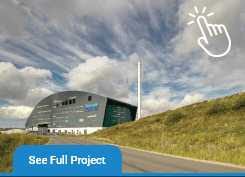
The Filbornaverket enerygy-from-waste-facility, Sweden
(Case Study PDF 189 KB)
An energy-from-waste facility providing electricity and heating to surrounding neighbourhoods
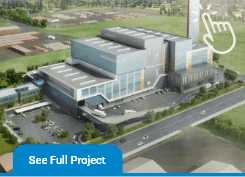
Kwinana Energy from Waste, Australia
(Case Study PDF 189 KB)
The first Australian facility to recover and reuse waste for energy.
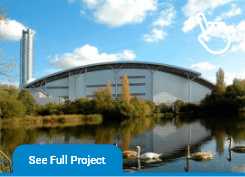
Lakeside Energy from Waste Centre, England
(Case Study PDF 188 KB)
This plant processes over 450,000 tonnes of residual waste each year.

Duiven Energy from Waste plant, The Netherlands
(Case Study PDF 177 KB)
An energy-from-waste centre that recovers and reuses carbon dioxide for nearby horticulture.

The Dublin Energy from Waste facility, Ireland
(Case Study PDF 232 KB)
A state-of-the-art centre that diverts 600,000 tonnes of waste each year from landfill.
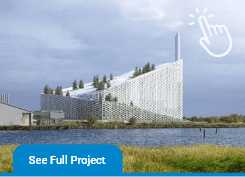
Amager Bakke,
Denmark
(Case Study PDF 187 KB)
An award winning energy-from-waste setting new environmental standards.
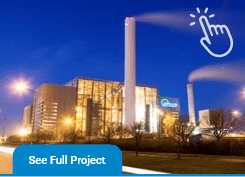
The Sysav Facility in Malmö, Sweden
(Case Study PDF 182 KB)
One of the world’s most advanced plants for waste combustion and gas cleaning systems and energy-efficient facilities in Sweden.
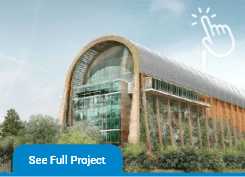
Leeds Recycling & Energy Recovery Facility, England
(Case Study PDF 162 KB)
A landmark facility that removes recyclables and turns household waste into energy.